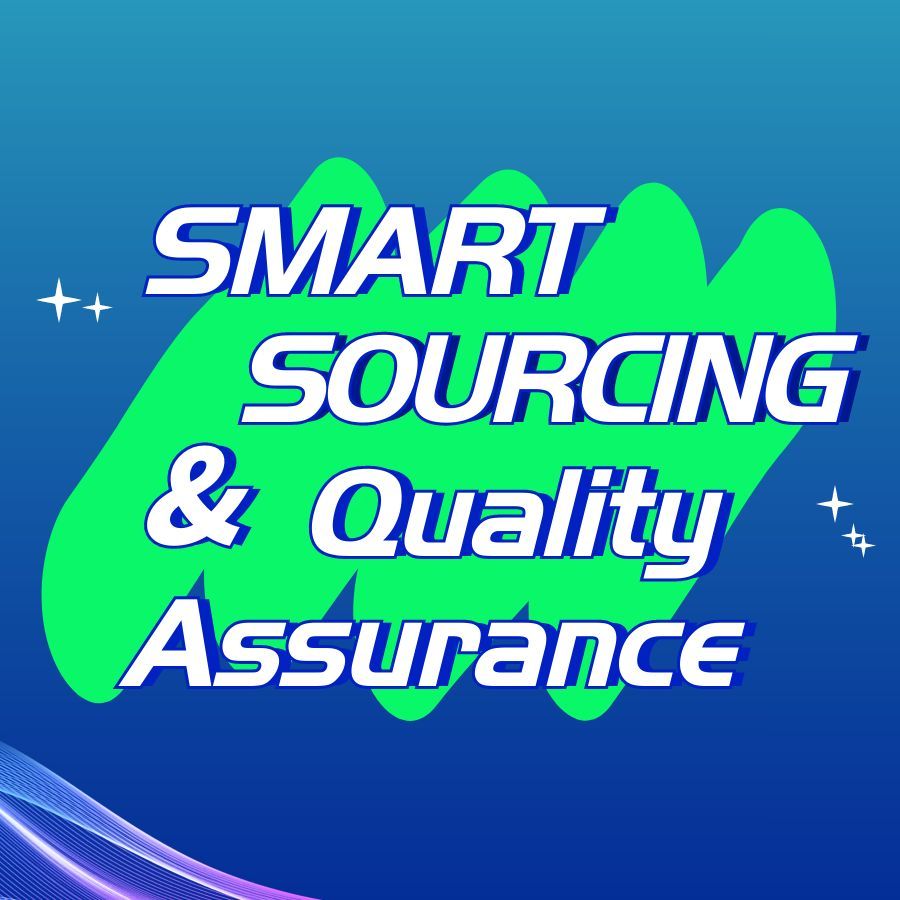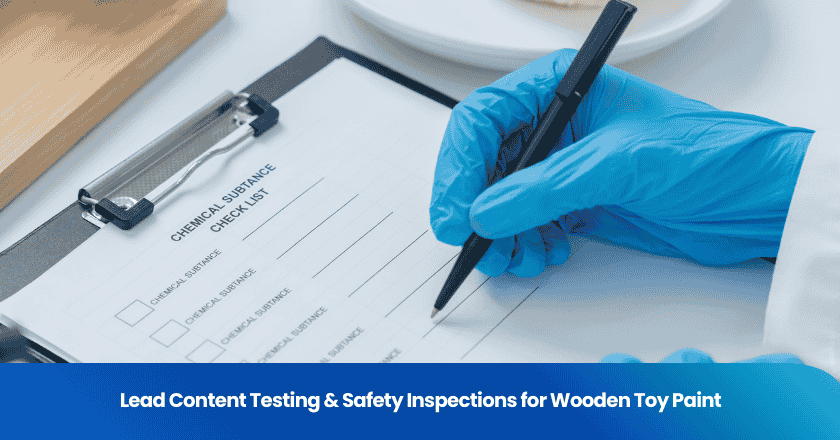
When choosing a third-party inspection company, you need to focus on your specific needs and select a partner that demonstrates independence, experience, and professionalism. Many companies rely on third party inspection companies to ensure product quality, reduce compliance risks, and meet global trade standards. You benefit from unbiased evaluations that help protect your reputation and financial security. By matching the inspection company to your requirements, you improve your ability to safeguard against defects and maintain compliance in international markets.
- Ensures product quality and compliance with international standards
- Reduces compliance risks associated with product quality issues
Key Takeaways
- Define your inspection needs clearly to avoid unnecessary costs and ensure you receive the right level of service.
- Evaluate third-party inspection companies based on their accreditation, independence, experience, and geographic coverage.
- Verify the credentials and certifications of inspection companies to ensure they meet industry standards and deliver reliable results.
- Compare costs carefully, looking for hidden fees and value-added services that enhance your inspection experience.
- Prioritize clear communication and support throughout the inspection process to improve outcomes and customer satisfaction.
Define Your Inspection Needs
Before you select third party inspection companies, you need to define your inspection needs clearly. This step helps you avoid unnecessary costs and ensures you receive the right level of service.
Inspection Type and Scope
Start by identifying the type of inspection that fits your business. In manufacturing and supply chain industries, you can choose from several inspection types, each serving a different purpose. The table below outlines common options:
| Type of Inspection | Purpose |
|---|---|
| Pre-Production Inspection | Checks materials and parts before production begins. |
| Initial Production Check (IPC) | Confirms product specifications at the start of production. |
| During Production Inspection | Detects defects during production, reducing rework risks. |
| Final Product Inspection | Approves or rejects shipments before they leave the factory. |
| Container Loading Inspection | Ensures goods are packed and secured for safe transit. |
| In-Line Inspection | Spot checks during production to catch issues immediately. |
| Production Monitoring | Provides continuous supervision to maintain quality standards. |
You should also consider the scope. For example, a first article inspection verifies the first units before mass production, while a 100% inspection checks every unit in a batch. The right scope depends on your risk tolerance and product value.
Industry and Regulatory Requirements
Every industry has unique regulatory requirements. You must ensure your inspection process aligns with these standards. For example:
- Food: Inspectors test for contaminants, verify nutritional labels, and check hygiene in manufacturing facilities.
- Electronics: Inspections focus on electrical safety, electromagnetic compatibility, and durability.
- Textiles: Inspectors check for safety compliance, proper labeling, and material safety data sheets.
If you operate in multiple industries, you need to match your inspection approach to each sector's rules.
Product and Region Specifics
Your product type and target regions influence your inspection needs. Some products require more frequent checks due to higher risk or stricter regulations. For example, electronics sold in the US must pass FCC testing, while those in the EU need CE certification. You should also consider the geographic coverage of third-party inspection companies to ensure they can support your supply chain locations.
Tip: List your products, target markets, and any special compliance needs before contacting third-party inspection companies. This preparation streamlines the selection process and helps you communicate your requirements clearly.
Key Criteria for Third Party Inspection Companies
Choosing the right third party inspection companies requires you to evaluate several essential criteria. These factors help you ensure that your inspection partner delivers reliable, unbiased, and high-quality results. By focusing on accreditation, independence, experience, professionalism, geographic coverage, and regulatory compliance, you can make an informed decision that protects your business interests.
Accreditation and Independence
You should always check if a third-party inspection company holds valid accreditation. Accreditation ensures that the company meets established quality standards and has passed rigorous third-party evaluations. This process verifies the competence of inspection laboratories and builds trust among regulatory agencies and industry leaders. For example, laboratories accredited under ISO/IEC 17025 have demonstrated strict adherence to international standards. This level of accreditation confirms both the independence and reliability of the inspection results.
Independence is equally important. An independent inspection company operates without conflicts of interest. This objectivity guarantees that you receive unbiased assessments of your products or processes. When you select a company with recognized accreditation and a reputation for independence, you strengthen your quality assurance and reduce the risk of compromised results.
Experience and Professionalism
Experience and professionalism set leading third-party inspection companies apart. You should look for companies with a proven track record in your industry. Their expertise ensures that inspectors understand the unique challenges and requirements of your sector. Professionalism also means that the company maintains high standards in every aspect of its service, from communication to reporting.
The table below highlights the professional standards most valued by clients:
| Professional Standard | Description |
|---|---|
| Experience and Expertise | Agencies with a strong history and specialization in your industry deliver better results. |
| Certifications and Accreditations | These validate the agency's credibility and commitment to international standards. |
| Reporting Quality | Detailed, clear reports support effective decision-making and problem-solving. |
| Geographic Coverage | Agencies operating in your regions can provide timely inspections and understand local regulations. |
| Client Feedback | Positive reviews and testimonials reflect reliability and client satisfaction. |
You should always review a company's history, client feedback, and sample reports. This approach helps you judge their professionalism and ability to deliver consistent quality.
Geographic Coverage and Versatility
Your supply chain may span multiple regions. You need a third-party inspection company with broad geographic coverage and versatility. Leading companies operate in key markets worldwide, which allows them to support your business wherever you need inspections.
When you choose a company with global reach, you gain flexibility and consistency in quality control. Versatility also means the company can handle different types of inspections and adapt to changing requirements.
Regulatory Compliance
Regulatory compliance is a critical factor in global trade. You must ensure that your third-party inspection partner understands and follows all relevant standards. The most critical compliance requirements include:
- Adherence to international standards such as ISO and ASTM.
- Compliance with local regulations on product safety, environmental impact, and performance.
- Issuing certification reports that are recognized internationally.
To maintain ongoing compliance, leading third-party inspection companies:
- Engage stakeholders at all levels to promote a culture of compliance.
- Implement integrated compliance programs for centralized oversight.
- Allocate resources to support comprehensive risk management.
- Use technology, including AI, to improve compliance efficiency.
- Rely on data-driven monitoring and continuous assessment for ongoing oversight.
Tip: Always verify that your inspection partner stays updated with changing regulations and invests in technology to maintain high standards.
By focusing on these key criteria, you can select third-party inspection companies that deliver reliable, high-quality results and support your business growth.
Verifying Third-Party Inspection Companies
Selecting the right inspection partner requires more than reviewing a website or brochure. You need to verify that the company meets industry standards and delivers consistent, high-quality service. This process involves checking credentials and certifications, evaluating client references and reviews, and analyzing the company's track record through case studies.
Credentials and Certifications
You should always start by confirming the credentials and certifications of any third-party inspection company. Recognized certifications demonstrate that the company follows strict industry standards and employs qualified inspectors. The table below outlines some of the most important certifications you should look for:
| Certification | Description |
|---|---|
| API | American Petroleum Institute, ensures compliance with industry standards. |
| ASNT | American Society for Nondestructive Testing, validates inspection techniques. |
| ASME | American Society of Mechanical Engineers, focuses on mechanical standards. |
| ISO 9712 | International standard for NDT personnel, ensures quality in nondestructive testing. |
When you review certificates, pay attention to specific details that confirm authenticity. Look for a registration or report number, the issuing company’s name and contact information, and the certificate holder’s details. Product information, such as model numbers or SKUs, should match your order. Certificates should also reference relevant regulations and harmonized standards. A valid certificate will include a clear statement of compliance and a signature or stamp from the issuing authority.
Tip: Always cross-check certificate details with the issuing organization’s database or contact them directly to confirm validity.
Client References and Reviews
Client feedback offers valuable insight into the reliability and professionalism of third-party inspection companies. You should not rely on a single review or reference. Instead, use a systematic approach to assess credibility:
1. Verify that the company holds all necessary licenses and insurance.
2. Read detailed reviews across multiple platforms to identify consistent patterns.
3. Request certificates of general liability and workers compensation insurance, then confirm their validity with the issuing agent.
4. Search for permits or approvals in your city’s online portal if the inspection involves regulated activities.
5. Ask about the qualifications of technicians, such as IICRC training or state-required licenses.
6. Request a list of all subcontractors involved in the inspection process.
7. Look for comments in reviews about how the company defines the scope of work, manages sequencing, and handles changes.
8. Cross-check reviews for consistency across different platforms.
This approach helps you identify companies that deliver on their promises and maintain high standards throughout the inspection process.
Track Record and Case Studies
A strong track record sets leading third-party inspection companies apart. You should request case studies or performance summaries that highlight key success metrics. These metrics provide a clear picture of the company’s ability to deliver quality results on time and with minimal issues.
You should look for companies that consistently achieve high on-time delivery rates, low defect rates, and strong customer satisfaction scores. These indicators show that the company can handle your inspection needs efficiently and securely.
Note: Reliable third-party inspection companies will provide detailed case studies and performance data upon request. This transparency demonstrates their commitment to quality and continuous improvement.
By following these steps, you can confidently verify the capabilities of any third-party inspection company and select a partner that aligns with your business goals.
Service Quality and Communication
Reporting Standards
You need to evaluate how third-party companies report their findings. High reporting standards ensure you receive clear, actionable information. Leading companies follow industry standards that cover several aspects of quality. Comprehensive reports support transparency and accountability. They help you make informed decisions and maintain trust with stakeholders. High-quality reporting also enhances your ability to monitor compliance and address issues quickly.
Speed and Responsiveness
Timely delivery of reports and prompt communication play a vital role in your satisfaction. Industry data shows that leading companies can deliver inspection reports in as little as 18 days, with some achieving significant reductions in turnaround time. Fast response times allow you to resolve problems before they escalate. You benefit from same-day bookings and guaranteed report delivery within 24 hours in urgent cases. Quick deployment of inspectors ensures you never face unnecessary delays.
Timely communication and rapid reporting directly impact your ability to maintain quality standards and meet deadlines.
Clarity in Communication
Clear communication builds trust and reduces misunderstandings. You should expect detailed explanations, straightforward language, and easy-to-read summaries in every report. When companies communicate clearly, you gain confidence in their findings and recommendations. Open dialogue also helps you address concerns and implement corrective actions efficiently.
- Transparency in reporting fosters trust and supports compliance.
- Reliable information allows you to make decisions with confidence.
- Consistent updates keep you informed throughout the inspection process.
High-quality service depends on both the accuracy of the information and the clarity with which it is delivered. When you prioritize these factors, you strengthen your quality management and protect your business interests.
Comparing Costs and Value
When you evaluate third-party inspection companies, you need to understand how pricing models work and what value you receive for your investment. The cost structure can vary widely, so you should compare options carefully to avoid unexpected expenses.
Pricing Models
Inspection companies use several common pricing models. You may encounter daily rates, hourly charges, or per-order fees.
You should select a pricing model that matches your project size and frequency. For ongoing projects, daily or hourly rates may offer flexibility. For one-time inspections, per-order charges often provide a straightforward solution.
Hidden Fees
You need to watch for hidden fees that can increase your total cost. Several factors influence the final price:
- Inspection type affects the base rate.
- Location matters; remote areas often require higher travel expenses.
- Volume of goods can lead to discounts per unit.
- Inspector expertise may result in premium charges.
- Urgency increases costs for last-minute bookings.
- Additional testing or certifications add to the bill.
- Travel and logistics, such as long-distance trips, raise expenses.
Tip: Always request a detailed quote that lists all possible charges. This approach helps you avoid surprises and budget accurately.
Value-Added Services
Some inspection companies offer value-added services that enhance your experience. These may include real-time reporting, digital dashboards, or customized compliance support. You should consider these extras when comparing costs, as they can improve efficiency and reduce risk. Value-added services often justify a higher price if they streamline your workflow or provide better insights.
You gain the most value when you balance cost, transparency, and service quality. Careful comparison ensures you select an inspection partner that meets your needs and supports your business goals.
Common Mistakes When Choosing a Third-Party Inspection Company
Selecting third party inspection companies requires careful attention to detail. Many organizations make avoidable mistakes that impact customer satisfaction and overall quality. You can avoid these pitfalls by understanding the most frequent errors and taking proactive steps.
Overlooking Independence or Credentials
You risk compromising inspection results when you overlook independence or credentials. Some companies fail to verify inspector qualifications and training, which leads to missed defects and unreliable reports. Independent third-party inspection companies provide unbiased assessments, but vendor-biased agencies may produce managed or falsified reports. Continuous training and certifications ensure inspectors maintain high standards. The table below highlights frequent mistakes related to independence and credentials:
| Mistake | Description |
|---|---|
| Overlooking Inspector Qualifications | Unqualified inspectors may miss critical defects. |
| Ignoring Independence and Transparency | Vendor-biased agencies can compromise credibility. |
| Not Verifying Past Performance | Skipping reference checks risks inconsistent inspection quality. |
You should always request proof of credentials and review past performance to protect customer satisfaction.
Focusing Only on Price
Price matters, but focusing only on cost often leads to poor outcomes. Some organizations choose the lowest bidder without considering service quality or expertise. This approach can result in delayed reports, missed defects, and reduced customer satisfaction. You need to balance cost with value, ensuring the inspection company offers reliable service and clear communication. Sampling too few units or using unclear inspection criteria also creates a false impression of quality. You should review the inspection process and confirm that the company uses structured plans and thorough methods.
Tip: Always request a detailed breakdown of services and compare more than just the price. Quality and customer satisfaction should guide your decision.
Ignoring Communication and Support
Effective communication drives successful third-party inspection. Poor communication leads to confusion, delays, and missed deadlines. You need direct channels and dedicated coordinators to manage the inspection process. Prompt responses to queries and clear reporting support customer satisfaction. Establish a point of contact and maintain open dialogue throughout the project. Review inspection reports thoroughly and address any corrective actions recommended. Maintaining inspection records helps with future audits and compliance.
You improve customer satisfaction and inspection outcomes by prioritizing independence, value, and communication.
You can choose a reliable third-party inspection company by following these essential steps:
- Define your inspection needs and clarify your requirements.
- Evaluate companies based on accreditation, experience, and geographic coverage.
- Verify credentials, review client feedback, and analyze case studies.
- Compare costs and value, then prioritize clear communication.
Apply these criteria and avoid common mistakes. You will make confident decisions and protect your business interests.
FAQ
What is a third-party inspection company?
A third-party inspection company provides independent quality checks on products or processes. You use their services to ensure compliance with industry standards and reduce risks in your supply chain.
How do you verify the credibility of an inspection company?
You should check for valid certifications, review client testimonials, and request case studies. Reliable companies provide transparent documentation and clear proof of their qualifications.
Why is independence important in third-party inspections?
Independence ensures that you receive unbiased results. An independent company does not have a stake in your business or your supplier’s business, so you can trust their findings.
What documents should you expect after an inspection?
You receive a detailed inspection report. This report includes quality assessments, compliance checks, photos, and recommendations for corrective actions if needed.
How often should you schedule third-party inspections?
You should schedule inspections based on your product type, risk level, and regulatory requirements. High-risk products or new suppliers may require more frequent checks.
Grow your business with TradeAider Service
Click the button below to directly enter the TradeAider Service System. The simple steps from booking and payment to receiving reports are easy to operate.





